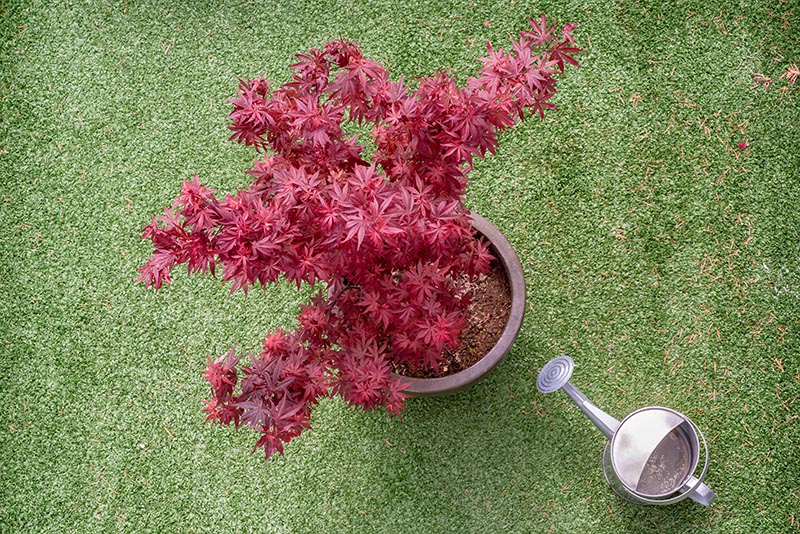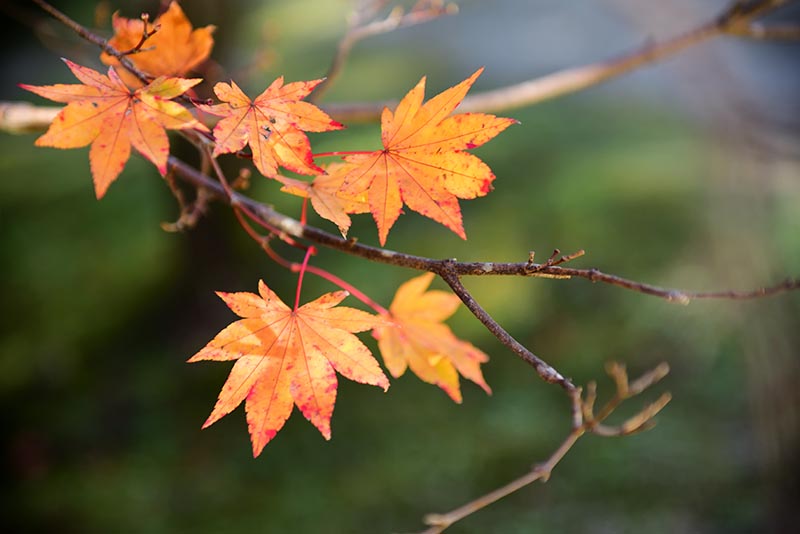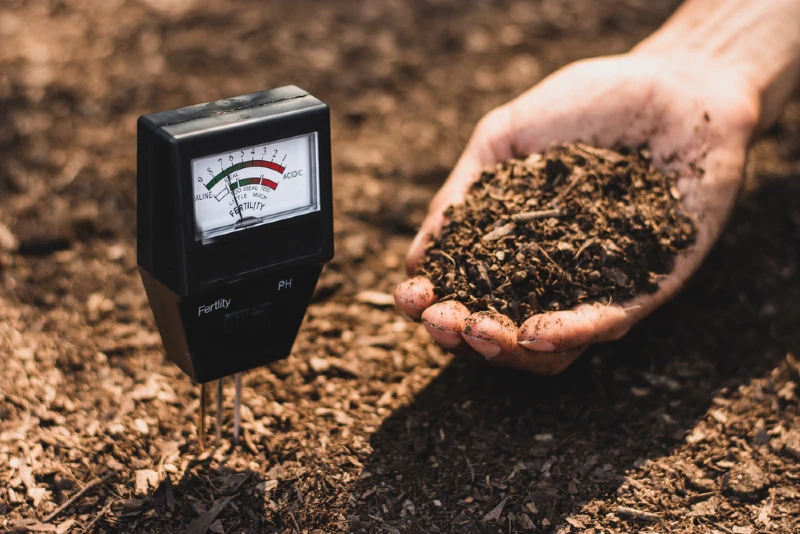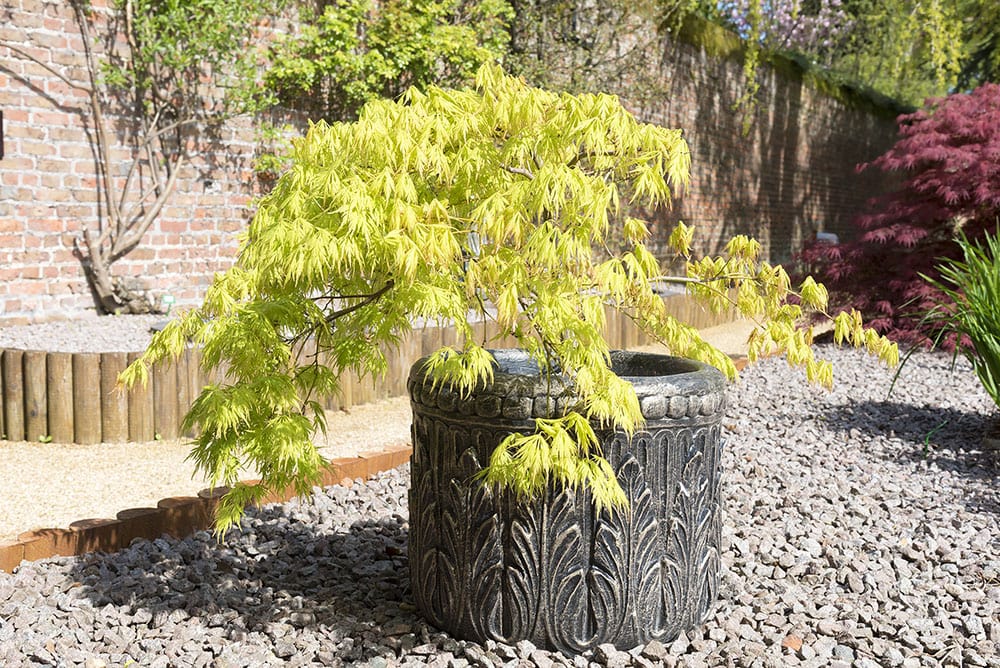Is My Japanese Maple Dead (5 Signs to Look For)
-
Pete Ortiz
- Last updated:

Known as Acer palmatum, the Japanese maple is a small tree native to Japan and Korea, which has a unique appearance and is treasured by enthusiasts as a garden ornament. In spring and summer, the deciduous tree spots colorful green, bronze, or red foliage.
When you notice changes in your maple tree, the gnawing question that pesters your mind is whether the tree is dead. Signs such as browning and leaves falling off may signal the beginning of wilt, seasonal dormancy, or death.
While Japanese maples are sensitive to hot weather, wind, and dry conditions, reclaiming this tree and saving it from imminent death is easy. In this article, let’s examine the five signs to look for if you think the tree is declining or stressed and whether it is dying.
The 5 Signs to Tell If a Japanese Maple Is Dead
The small Japanese maple can start dying for several reasons, including age, physical damage by the sun and wind, or fungal diseases. Many of these ailments and conditions are preventable or reversible. Once identified in good time, you can bring it back to health.
To be sure, here are five signs to look for to tell whether your Japanese maple is dead:
1. Leafy Signs of a Stressed Japanese Maple

Leaves offer the first sign that your Japanese maple isn’t doing so well, and learning to interpret their appearance can help save this ornamental shrub. A dull leaf color scorching around the edges or curling indicates that your tree is stressed, often due to insufficient water, strong wind, and scorching sun in its location.
You can correct leaf symptoms in a Japanese maple by checking for moisture in the top one or two inches of soil and watering the tree more often when necessary.
If you spot young leaves that turn brown and curl, it’s another indication that your Japanese maple isn’t growing as it should be due to one or two stress factors. However, leaves that fall as autumn nears or when they’re fully grown and dried up could mean it’s still healthy.
2. Conditions of the Japanese Maple’s Bark
Looking into the condition of a tree’s bark will tell you whether your Japanese maple is dead. Using a knife, you can check underneath the shrub’s bark by cutting a tiny sliver from a limb where it appears dead or the trunk if the whole tree has declined.
If the wood underneath the bark appears green and moist, then your Japanese maple is still alive and has the potential to recover.
But when you find a tan dry appearance underneath the tree’s bark, that part or the whole tree is probably dead. If that characteristic gets relegated to individual limbs, prune them out to maintain the health of the rest of your shrub.
3. Evidence of Japanese Maple Winter Damage

Even though it’s deciduous, the Japanese maple tree is adversely affected by winter, especially when the sun is warm during the day and temperatures drop precipitously at night. That’s because when exposed to the sun’s heat, cells in the tree thaw and then refreeze again, causing bursting and ultimate death.
When you see its stem, branches, and buds either broken or dead in winter, it’s an obvious sign of damage by alternating warm and cold cycles. If your tree is potted, it may also suffer root freeze, while the sun causes sunscald on the leaves or splits the bark at the tree’s base.
4. Root’s Fungal Rot
Death by root happens if you overwater the Japanese maple or when it’s affected by Fusarium, Verticillium, and Pythium fungal pathogens. These microbes are prolific where the soil is overly saturated with wetness for lengthy periods, and root rot doesn’t respond to fungicides.
You’ll notice roots with fungi from the tree’s crown even though infection starts beneath the ground. But it’s not always apparent until your Japanese maple starts to die. So, the best method of checking if your trees are affected is to dig up some of the roots to see if they appear rotten or waterlogged.
You may also identify reddish-brown cankers or fruiting bodies due to the fungi.
5. Testing Japanese Maple Soil for Alkalinity

Calcium, zinc, iron, and manganese are essential for Japanese maple to make its foliage thrive. That’s why the tree prefers slightly acidic soil as opposed to alkalinity. Chlorosis is the process where these trees cannot absorb nutrients from alkaline soils, leading to symptoms of stunted growth and dying leaves. Thus, if the soil around your maple tree is alkaline, the tree is most likely not taking up nutrients, and if not dead already, it will be dead soon if the soil pH is not remedied.
Possible Causes of Death for a Japanese Maple Tree
Fungal Diseases
Japanese maple trees are susceptible to pathogens that cause fungal disease due to poorly drained soil and overly damp conditions. Wilted, falling leaves and a dead appearance may also pervade your tree due to root rot, plus other stresses like excessive sun, wind, and insufficient water.
Phytophthora, which causes root rot, and Verticillium wilt are the most common fungal microbes that affect Japanese maple trees. But while these often arise from boggy soil, lack of water and too much wind will also cause browned, scorched leaves with young ones falling.
Solution: Correct the Soil Condition
Ensure that the soil is well-draining and not too damp. This might sometimes call for transplanting the tree into better soil.
Sandy and loamy soils are best for Japanese maple due to their ability to drain fluently, as well as their adequate nutrition and acidic conditions. On the other hand, clay is the worst as it provides poor drainage and can easily harbor root rot-causing pathogens.
Wrong Watering Regimen
Under-watering, just like over-watering, causes stress to Japanese maple trees- you must strike a balance between the two.
Solution: Balance the Watering
Most Japanese maple trees suffer from root rot from waterlogged and poorly drained soil, while fungal pathogens infect a significant percentage. The best-growing conditions will reduce these risks considerably, including proper soil drainage, watering balance, and fertile organic soil content.
Planting the Tree Too Deep
A tree planted too deep experiences drainage issues, while one that’s shallow risks exposing its root ball to pests, fungi, and extreme weather.
Solution: Check the Planting Depth
Your Japanese maple should be planted at a reasonable level even when you have excellent quality soil to avoid water lingering around the deeper root zones of your tree. Ensure that your tree’s root ball is at least an inch above grade and covered in soil to form a mound so that excess water drains off.
There shouldn’t be more than an inch of soil on the stem, so raise any tree that’s too deep. When watering, pour away from the plant’s stem to give secondary roots more moisture than your tree’s primaries since over-watering is a stress causer.
Wrong Growing Conditions
Small trees and shrubs like the Japanese maple have adapted to growing under the shadowy canopies of thick forests and are sensitive to intense sun. As a shade lover, your Japanese maple won’t do well when the sunshine is direct and scorching.
Unfortunately, they’re also not heavy feeders; excess fertilizer will cause yellowed, browned, or scorched leaves, eventually dying. You may also notice fast growth that results in soft stems and branches, causing droop.
Solution: Winter Your Japanese Maple
Protect your Japanese maple from winter damage with up to four inches of mulching or moving potted trees to covered areas like the porch or garage. While this prevents icy weather and snowfall from damaging the plant, you can prepare the tree for cold weather by watering it well or wrapping it in burlap.
Soil Alkalinity
Significant alkalinity in the soil you’ve planted your Japanese maple tree could also cause it to die as it prefers acidic soils with a 5.5 and 6.5 pH. That’s because the nutrients these trees favor become insoluble in alkaline conditions, leaving them unable to uptake, which causes poor growth and, eventually, death.
Solution: Check on the Soil pH
You must ensure that its soil pH is slightly acidic to facilitate the uptake of calcium and other minerals from the soil. Otherwise, alkalinity will promote poor growth.

Can You Revive a Dying Japanese Maple?
First, note that unless a part of the tree is still viable, there’s no bringing back a dead Japanese maple, and the best thing to do is uproot it immediately. That’s because it can infect other trees with whatever caused its demise, especially if it is root rot due to fungal microbial action.
However, upon noticing the detrimental symptoms of decline in your Japanese maple, it’s necessary to carry out curative measures to revive and sustain its recovery. Except when completely dead, you can reverse the effects of almost all the stresses and infections that attack this hardy shrub.
To prevent death in any of the various cultivars of this tree:
Prune to Remove Dead Parts
Pruning is one way to stop disease and stress effects from spreading on your Japanese maple when it’s showing partial signs of dying. Find weak points to prune on the tree, starting from the trunk and working your way to the branches to strengthen this species.
Perform any pruning well before winter ends because once spring sets in, your tree won’t bud sufficiently to leverage the sunshine of summer. However, you can remove dead branches any time, whether wet, cold, or warm, but take care not to stress the plant.
Transplant the Tree
If the problem with your Japanese maple is soil alkalinity or fungal infestation, consider transplanting it to safer and more suitable soil. Conditions such as excessive wind and sun can also force you to relocate the tree to relieve undue stress, and so will soil that’s not easy to drain.
Always transplant Japanese maple in the fall when the tree is least susceptible to relocation stress and disease.
Flush Excess Fertilizer for the Japanese Maple
As already mentioned, the Japanese maple is not a heavy feeder. If perhaps you over-fertilized it or rainwater diluted excess lawn fertilizers into its soil, prune any wilted or dying leaves and then hydrate the soil to flush out the excess fertilizer.
Avoid nitrogenous fertilizer but instead use ericaceous compost to balance soil pH, applying a thick layer around the tree’s trunk every six months or so.
Final Word
The Japanese maple has been an ornamental garden tree for centuries. It’s an evergreen shrub resistant to pests and most diseases, plus there are over 300 varieties or cultivars, all with different leaf colors, shapes, and sizes. However, you must be keen to know if your tree is growing healthy and when it is dead.
With the five signs listed above, you can tell whether it is dead or dying, plus the ways you can prevent getting to this point. You can prune or relocate your tree to better soils, shade, or winter cover besides draining and augmenting the soil to prevent the death of your Japanese maple.
Featured Image Credit: LP2 Studio, Shutterstock
Contents


